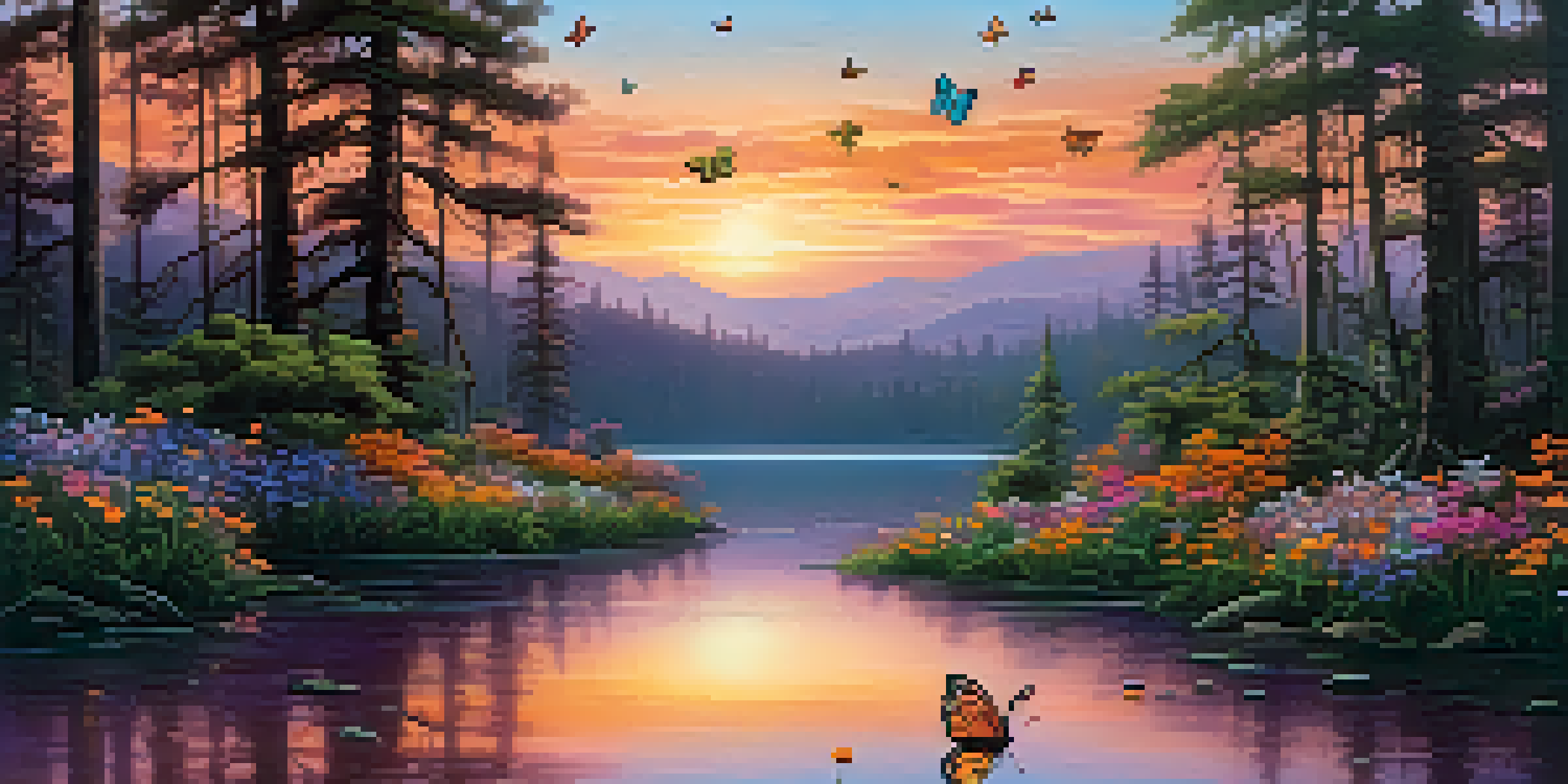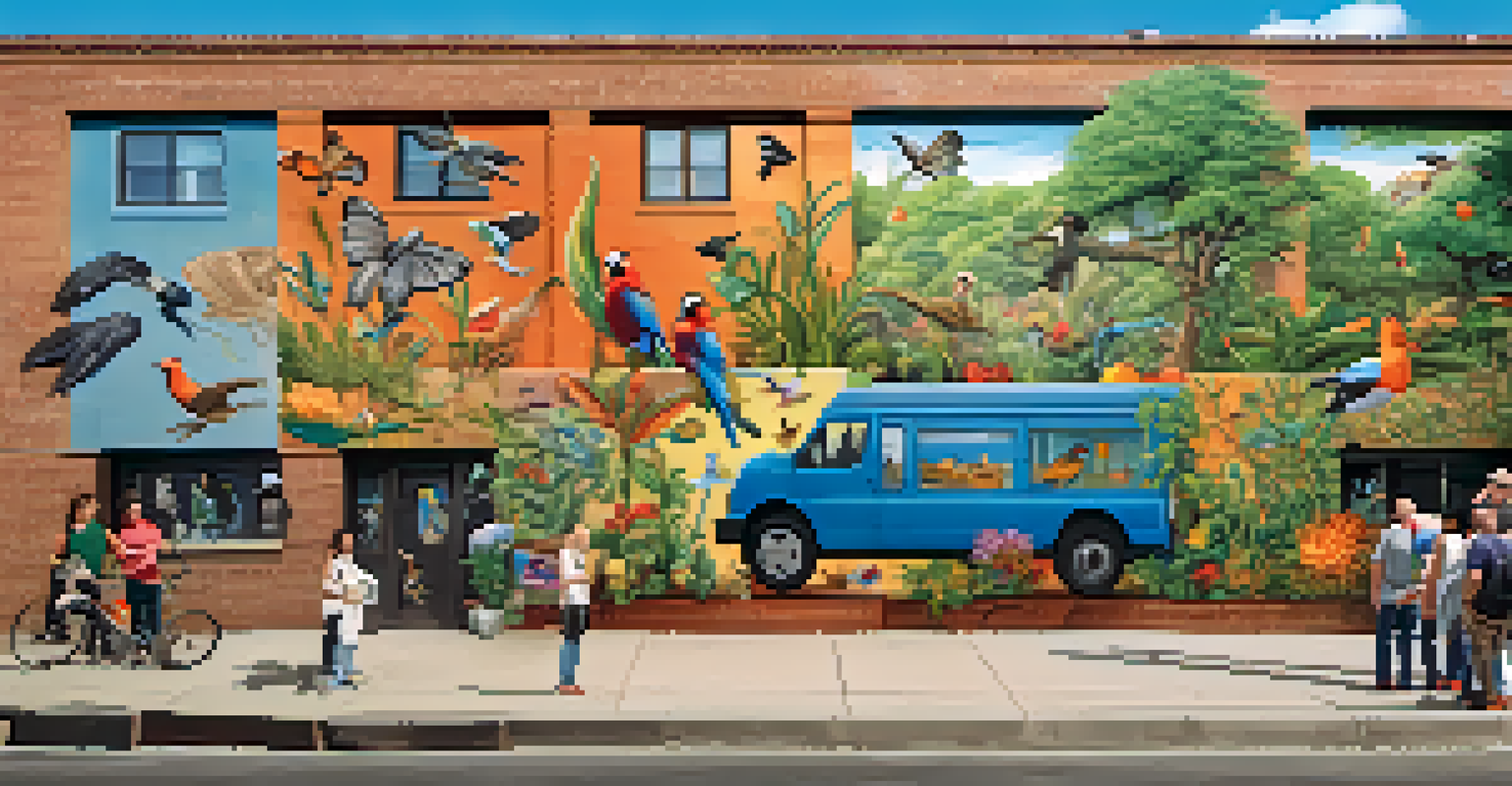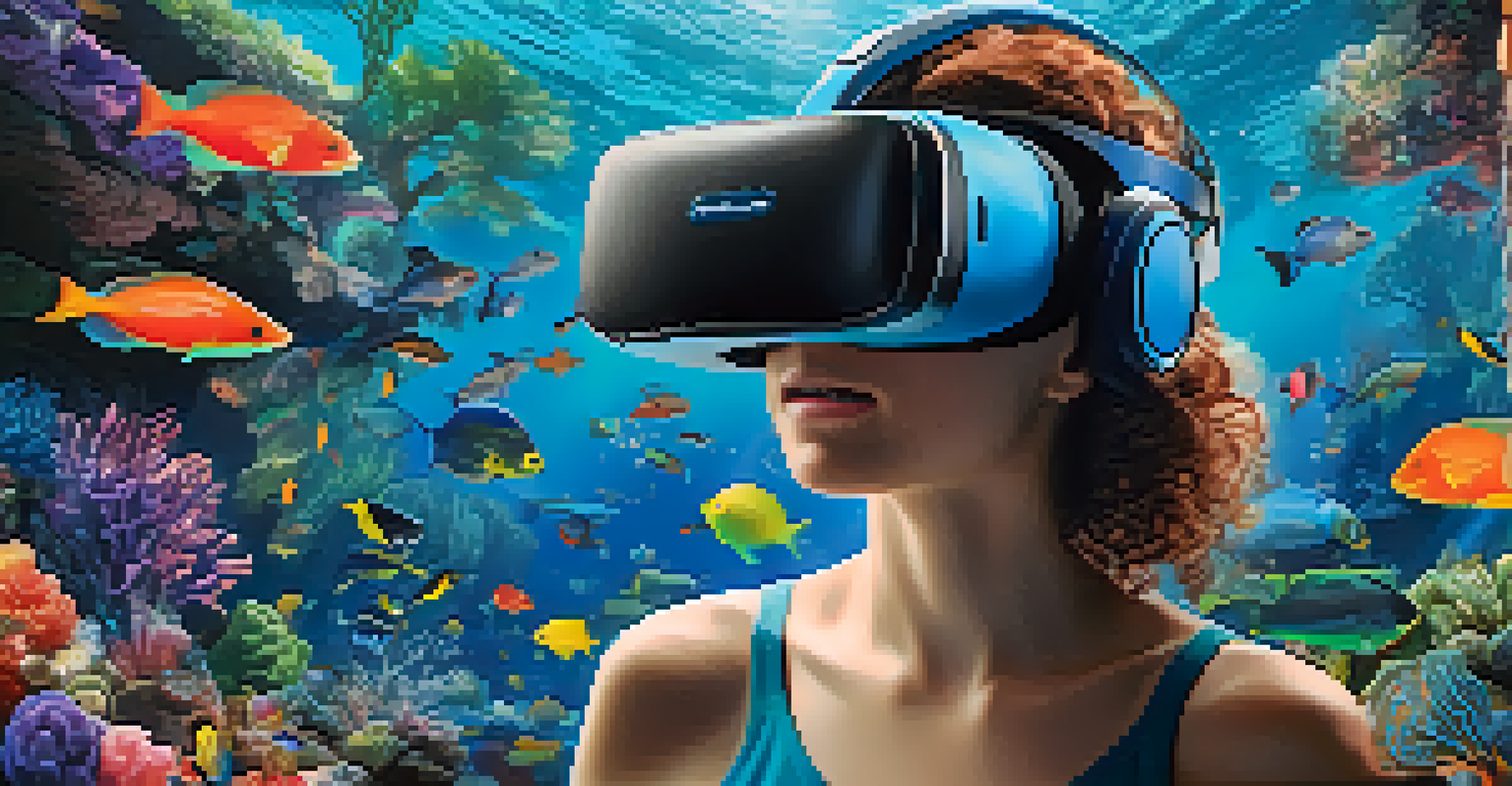Art and Biodiversity: Celebrating Nature through Creativity

The Connection Between Art and Nature's Diversity
Art has always drawn inspiration from the natural world, showcasing its complexity and beauty. From the intricate patterns of a butterfly's wings to the towering majesty of ancient trees, artists capture what makes our planet so unique. This connection not only reflects the diversity of life but also emphasizes our responsibility to protect it.
Art is not what you see, but what you make others see.
Many renowned artists, such as Claude Monet and Georgia O'Keeffe, have portrayed nature in their works, inviting viewers to appreciate its splendor. By immersing ourselves in these artistic expressions, we foster a deeper understanding of biodiversity. This relationship encourages us to recognize that the health of our environment is intertwined with our own well-being.
In this way, art serves as a bridge, linking humanity to the myriad forms of life that share our planet. Through creativity, we can celebrate and honor the rich tapestry of biodiversity that surrounds us. This celebration can inspire collective action to preserve our natural heritage.
Art as a Tool for Environmental Awareness
Art can be a powerful catalyst for change, raising awareness about environmental issues. Artists often use their platforms to highlight the challenges facing our ecosystems, from climate change to habitat destruction. Through thought-provoking installations and striking visuals, they compel us to confront uncomfortable truths about our relationship with nature.

For example, the work of environmental artist Chris Jordan illustrates the staggering waste produced by consumerism, using large-scale images made from discarded materials. Such art not only captivates but also educates, making complex environmental concepts accessible to a broader audience. It transforms data and statistics into relatable stories that resonate with people on an emotional level.
Art Inspires Environmental Action
Through creative expressions, art raises awareness about biodiversity and the urgent need for conservation.
By engaging with art that addresses these critical issues, we can cultivate a sense of urgency and responsibility. This heightened awareness can lead to meaningful conversations and inspire individuals to take action in their own communities. Art becomes a vehicle for not just reflection, but also motivation for positive change.
The Role of Community Art in Biodiversity Conservation
Community art projects often focus on local biodiversity, encouraging residents to engage with their natural surroundings. These initiatives can range from murals celebrating local wildlife to collaborative sculptures made from natural materials. By involving community members in the creative process, these projects foster a sense of ownership and pride in their environment.
We do not inherit the earth from our ancestors; we borrow it from our children.
For instance, urban gardens that incorporate art can serve as vibrant hubs for biodiversity. They attract pollinators and provide habitats for various species while also beautifying neighborhoods. When community members come together to create these spaces, they strengthen their bonds with each other and with nature.
Ultimately, community art acts as a reminder of the importance of preserving local ecosystems. It highlights the unique flora and fauna in our own backyards, urging us to protect these treasures. In this way, creativity becomes a communal effort to celebrate and conserve biodiversity.
The Impact of Digital Art on Biodiversity Awareness
In today's digital age, artists are harnessing technology to promote biodiversity in innovative ways. Virtual reality experiences, for example, allow users to explore endangered habitats without leaving their homes. This immersive approach can evoke strong emotional responses, making the plight of these ecosystems more tangible.
Social media has also emerged as a powerful platform for artists to share their work and raise awareness. Through hashtags and viral campaigns, artists can reach a global audience, amplifying their message about biodiversity conservation. This democratization of art allows everyone to participate in the conversation, regardless of geographical barriers.
Community Art Fosters Local Pride
Community art projects engage residents in celebrating and protecting their local ecosystems.
Digital art not only enhances our understanding of biodiversity but also invites collaboration across disciplines. By blending science with creativity, artists and researchers can work together to communicate urgent environmental issues. This synergy can inspire new approaches to conservation, proving that art can be both beautiful and impactful.
Celebrating Biodiversity Through Artistic Festivals
Artistic festivals dedicated to celebrating biodiversity have gained popularity worldwide. These events often feature local artists, musicians, and performers who showcase their interpretations of nature. Such festivals create a vibrant atmosphere where people can connect with art and each other, all while learning about biodiversity.
For example, the annual 'Biodiversity Festival' in various cities includes workshops, art displays, and discussions on environmental issues. Attendees can experience firsthand the ways in which art can inspire action toward conservation. These gatherings serve as a reminder of the beauty of our natural world and the importance of protecting it.
By bringing communities together, these festivals foster a shared appreciation for biodiversity. They highlight the role of creativity in environmental stewardship and encourage attendees to take that inspiration back into their everyday lives. Ultimately, these celebrations unite us in our common goal of preserving nature's wonders.
Art Education and Biodiversity: A Formative Approach
Integrating art education into environmental studies can significantly enhance students' understanding of biodiversity. By encouraging students to express their thoughts and feelings about nature through creative projects, educators can foster a deeper connection to the subject matter. This hands-on approach allows students to explore complex ecological concepts in a fun and engaging way.
For instance, school programs that involve nature-based art projects can help students observe and appreciate their surroundings. Whether it's painting landscapes or creating sculptures from natural materials, these activities develop both artistic skills and environmental awareness. As students immerse themselves in the creative process, they become more mindful of the ecosystems that support life.
Digital Art Expands Conservation Reach
Technology and social media empower artists to share powerful messages about biodiversity with a global audience.
Ultimately, art education plays a vital role in shaping future generations’ attitudes toward biodiversity. By nurturing creativity alongside scientific knowledge, we empower young minds to become advocates for the environment. This holistic approach ensures that the next generation values and protects our planet's diverse life forms.
The Future of Art and Biodiversity: A Collective Vision
Looking ahead, the synergy between art and biodiversity will continue to evolve. As global challenges such as climate change intensify, artists will play an increasingly vital role in raising awareness and inspiring action. Their unique perspectives can illuminate urgent issues, encouraging us to rethink our relationship with nature.
Moreover, as communities become more interconnected through technology, collaborations between artists, scientists, and environmentalists will flourish. This collective vision will harness creativity to address pressing environmental concerns, creating innovative solutions that resonate on a personal level. By bridging these disciplines, we can craft a more sustainable future.

In conclusion, celebrating biodiversity through art is not just about aesthetics; it's about fostering a movement toward environmental stewardship. Together, we can inspire a deeper appreciation for the natural world, ensuring that future generations inherit a planet rich in diversity. Embracing this connection will ultimately empower us to create a legacy of care for our beautiful Earth.